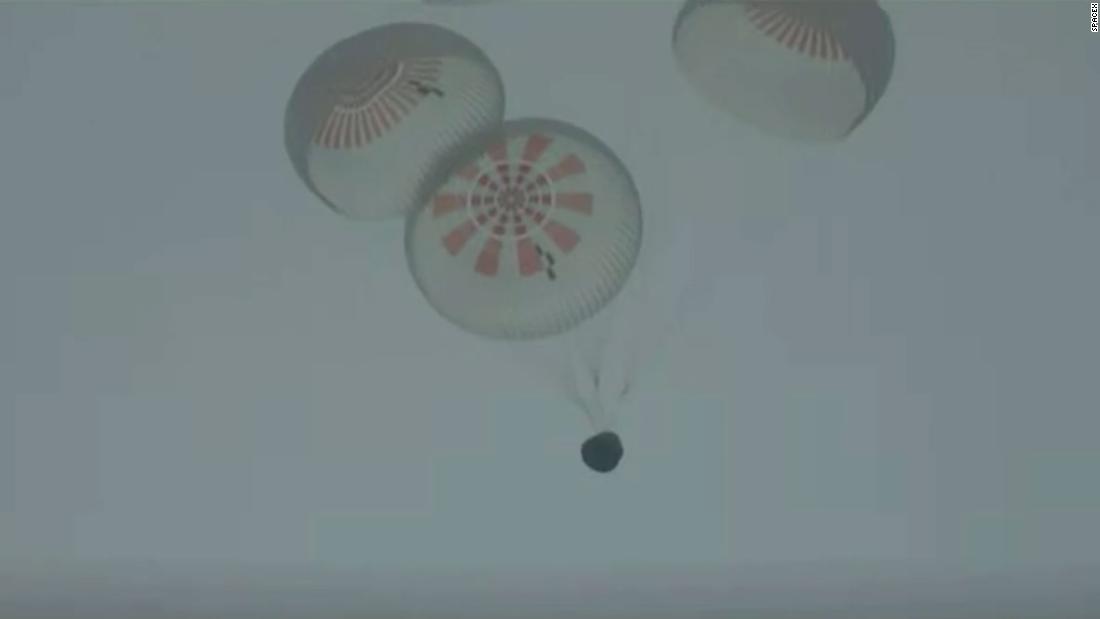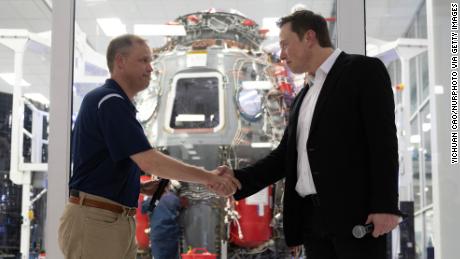“Thanks so much SpaceX, it was a heck of a ride for us,” billionaire and “Inspiration4” mission commander Jared Isaacman could be heard saying over the company’s livestream.
The Crew Dragon capsule, which is designed not to allow temperatures to go past 85º in the cabin, used its heat shield to protect the crew against the intense heat and buildup of plasma as it plunged back toward the ocean
After emerging from the spacecraft, just before being whisked back to Florida by helicopter, the crew were seen smiling and waving to the livestream cameras.
But the flight was apparently not totally flawless from a technical standpoint. “You know we had a couple of issues that we worked, we did work something on the Waste Management System,” Benji Reed, SpaceX’s director of crew mission management, said during a post-flight briefing. “But that was fine, and you know, the crew was happy and healthy,” he added.
Inspiration4 mission director Todd Ericson clarified that the issues was with the waste management system’s fan. The SpaceX team responded by implementing “a backup plan.”
“My hat’s off to them,” Ericson added.
Reed also said that there was an issue with a temperature sensor in one of the Draco thrusters used to move the capsule in outer space, but the company responded by taking the “double redundant” sensor offline.
“And in fact that Draco itself was redundant, it was never a risk,” Reed said.
NASA officials have, however, have said the Crew Dragon is likely the safest crewed vehicle ever flown. And the vehicle had already completed two successful trips to space with professional astronauts on board before this group of space tourists took their multi-day joyride.
Though they’re not the first tourists to travel to orbit, their mission, called Inspiration4, was notable because it did not involve a stay at the International Space Station under the tutelage of professional astronauts, as previous missions involving space tourists have. Rather, the four spaceflight novices have spent the past three days free-flying aboard their 13-foot-wide capsule on their own at about a 350 mile altitude — 100 miles higher than where the ISS is, and higher than any human has flown in decades.
The Inspiration4 Twitter account also shared footage of Arceneaux speaking to her St. Jude patients, and Isaacman rang the closing bell of the New York Stock Exchange via satellite feed on Friday afternoon.
Other than that, few updates were shared with the public while the crew was in orbit. The first live audio or visuals from inside the crew capsule were shared Friday afternoon, nearly two days after they launched.
During previous SpaceX Crew Dragon missions — all of which have been flown for NASA and carried professional astronauts to the International Space Station -— the public has had more insight. The space agency and its dozens of communications personnel have worked alongside SpaceX to share practically every moment of the journey from launch until the astronauts dock with the International Space Station.
But this mission left the public largely in the dark when it came to questions about the crew’s schedule and how they were feeling while in orbit. Even though development of the Crew Dragon spacecraft was largely funded by taxpayers and SpaceX rents NASA facilities to support all its missions, Inspiration4 is considered a private, commercial mission. That means SpaceX’s customers only have to be as transparent as they want to be.
But favorable reviews of their experience could be crucial. SpaceX hopes that this mission will be the first of many like it, building up a new line of business for the company in which it uses Crew Dragon to fly commercial missions with tourists or private researchers rather than just professional astronauts.
SpaceX already has contracts for five other private missions, as well as at least four additional NASA-contracted missions.







